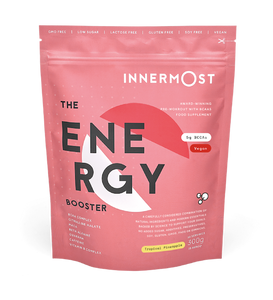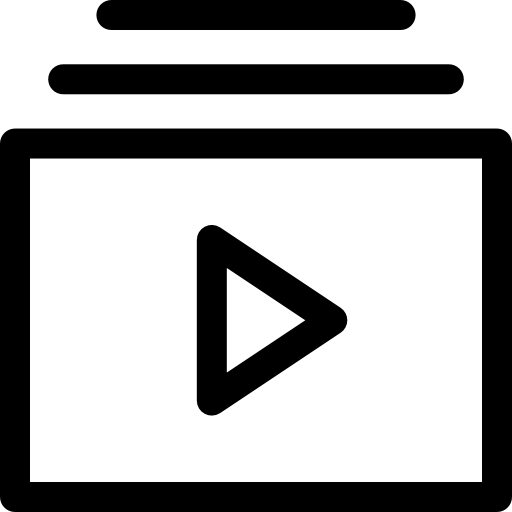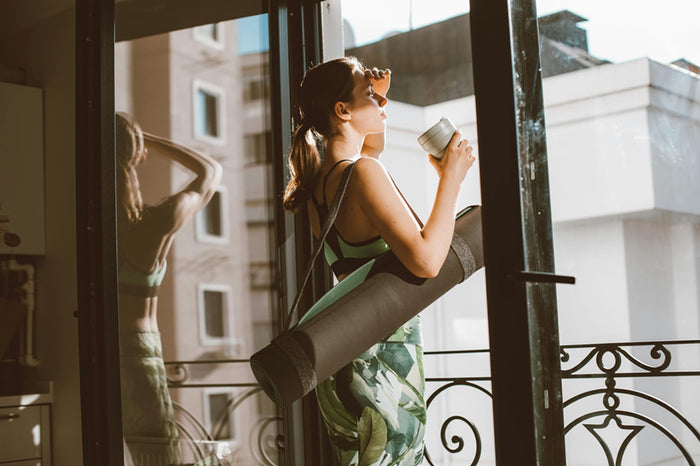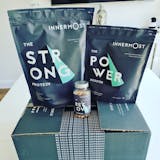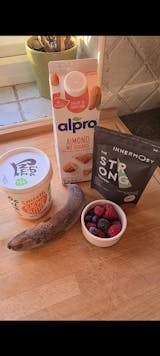Are you trying to shave a few seconds off your race time, deepen those yoga stretches, or hit a new personal best at the gym? Even with a solid training routine, it can sometimes feel like your full potential is just out of reach. That’s why we’ve partnered up with Urban, the UK’s leading home massage app, to find out the best three treatments that will push your athletic performance to the next level.

1. Deep tissue massage
What does deep tissue massage do?
The treatment that eases away knots to free up movement.
Did you know relieving muscle tension may be the key to improving your performance? Deep tissue massage uses kneading motions to release knots and stiffness across your body, leaving you with a greater range of motion. This helps you to reach higher, twist deeper and move more fluidly than before, making it ideal for avid golfers, rock climbers, tennis players and yogis alike.
You should expect a medium-firm pressure that gradually gets stronger, with the therapist using their elbows, fists, forearms and knuckles to break down tension deep in your muscles.
Athletic edge: improves flexibility
“Eva’s deep tissue massage certainly did the trick. Loosened my stiff muscles prior to a two-day golf tournament. Polite, efficient and informative, Eva was certainly a good choice of therapist.” Review for a 90-minute deep tissue massage with Eva K.
Book a deep tissue massage

2. Sports massage
All the benefits of a deep tissue massage, while targeting sport-specific aches and pains.
Lingering injuries can stop you from performing your best, but sometimes you’ve gotten so used to that familiar ache you don’t do anything about it. Sports massage is the perfect way to pinpoint and address any sports-related injuries, so you can recover faster and increase your capability.
What does a sport massage do?
Sports massage uses a variety of techniques with a firm pressure to re-oxygenate tired muscles and release built-up tension. Your therapist will also work with you to create a wider recovery plan and get those niggling injuries under control.
Whether you're dealing with a frozen shoulder, knee pain, shin splints, trapped nerves or general discomfort from exercise, a sports massage is the treatment for you.
Athletic edge: speeds up recovery
“Effective and targeted treatment for mid-marathon training strain. Tihamer’s knowledge and practical suggestions are a great help for me moving forward with my training.” Review for a 60-minute sports massage with Tihamer K.
Book a sports massage

3. Relaxing massage
A soothing massage, helping you to de-stress and refocus.
Research published in the National Institutes of Health shows that mental fatigue can reduce physical endurance by up to 20%. This means that poor mental health doesn’t just impact your wellbeing - it also hinders your athletic performance. A relaxing massage is designed to calm both your mind and body, helping to lower cortisol levels (the stress hormone) and promote a feeling of tranquility.
What happens at a relaxation massage?
With gentle pressure and smooth, flowing strokes, this treatment offers a serene and restorative experience. Combine your massage with deep breathing, a playlist of your choice and scented candles for added relaxation.
Athletic edge: clears mental clutter
“As a highly competitive triathlete (Olympic - sub 2h30m, Half Ironman - c. 6 hours) massage is a crucial part of my training regime. Massages will greatly improve my recovery and give me that extra edge over my competitors. I have already seen improvements in my 100m swimming splits… I can’t wait for my next massage.” Review for a 60-minute relaxing massage.
Book a relaxing massage
Ready to reach your peak? Use code INNERMOSTBLOG10 for 10% off your first Urban treatment.


